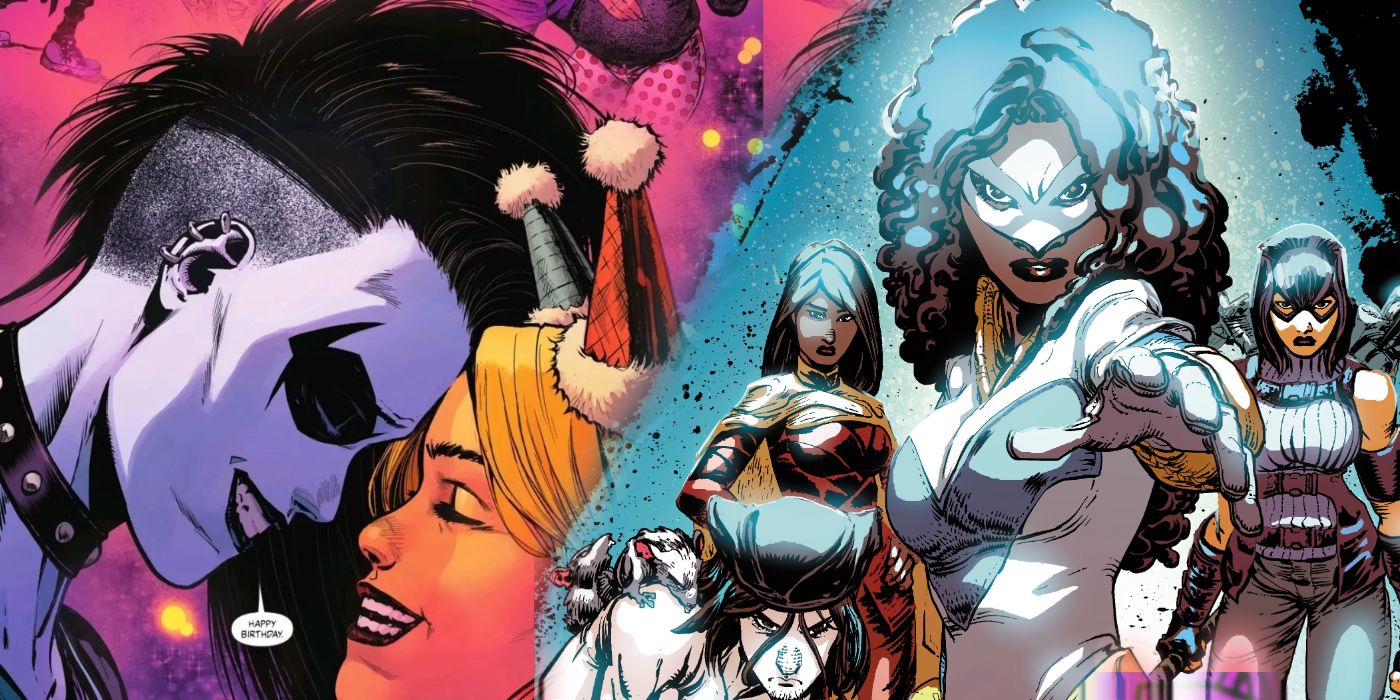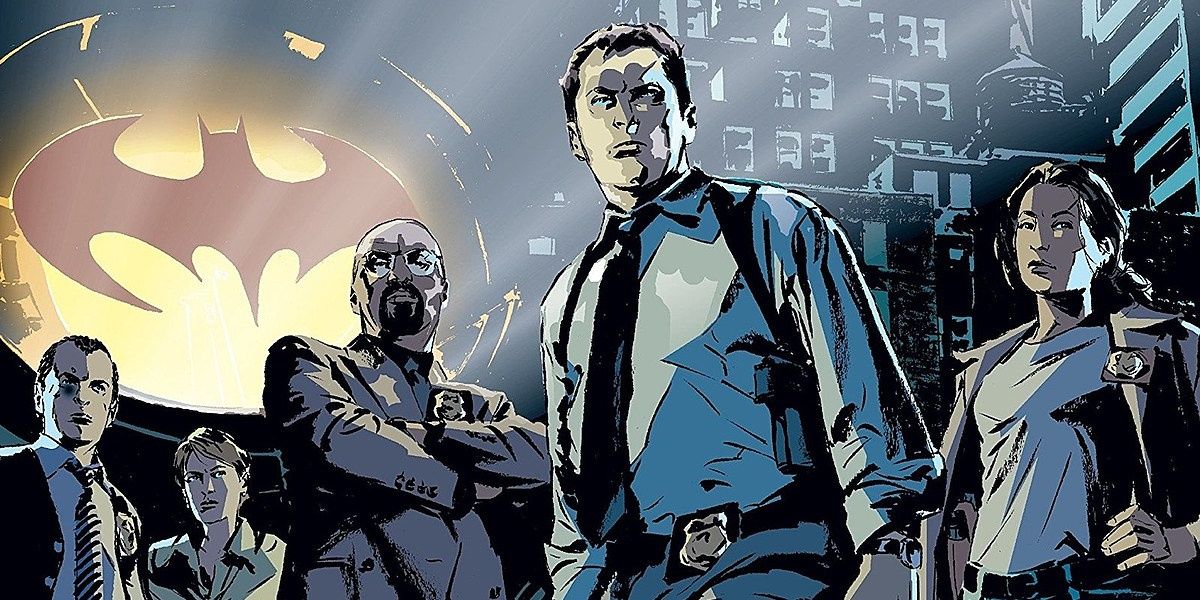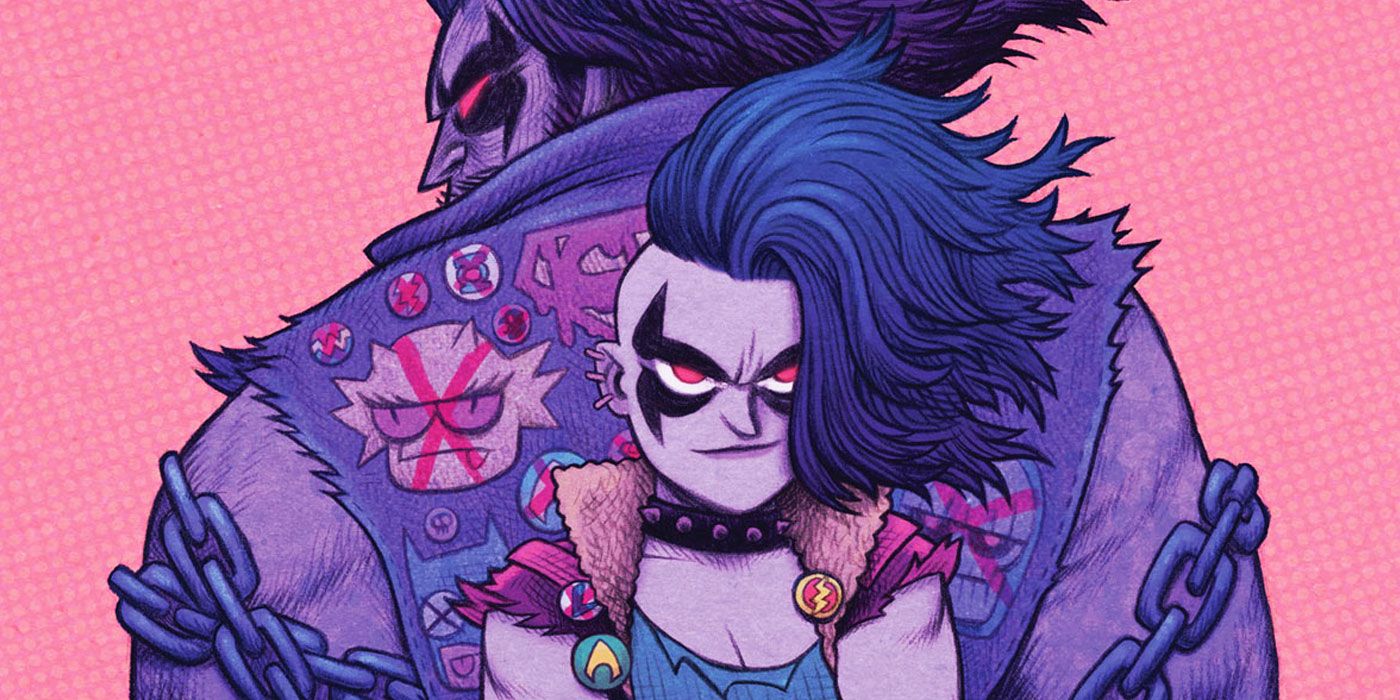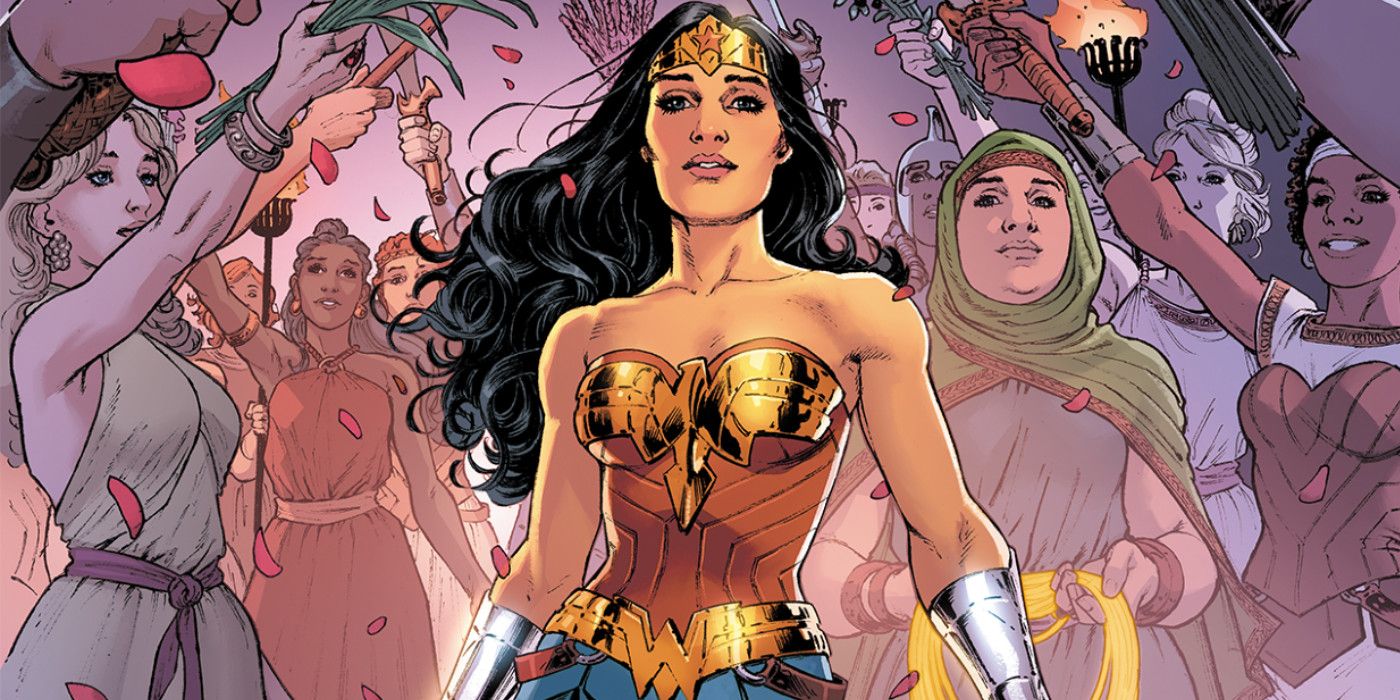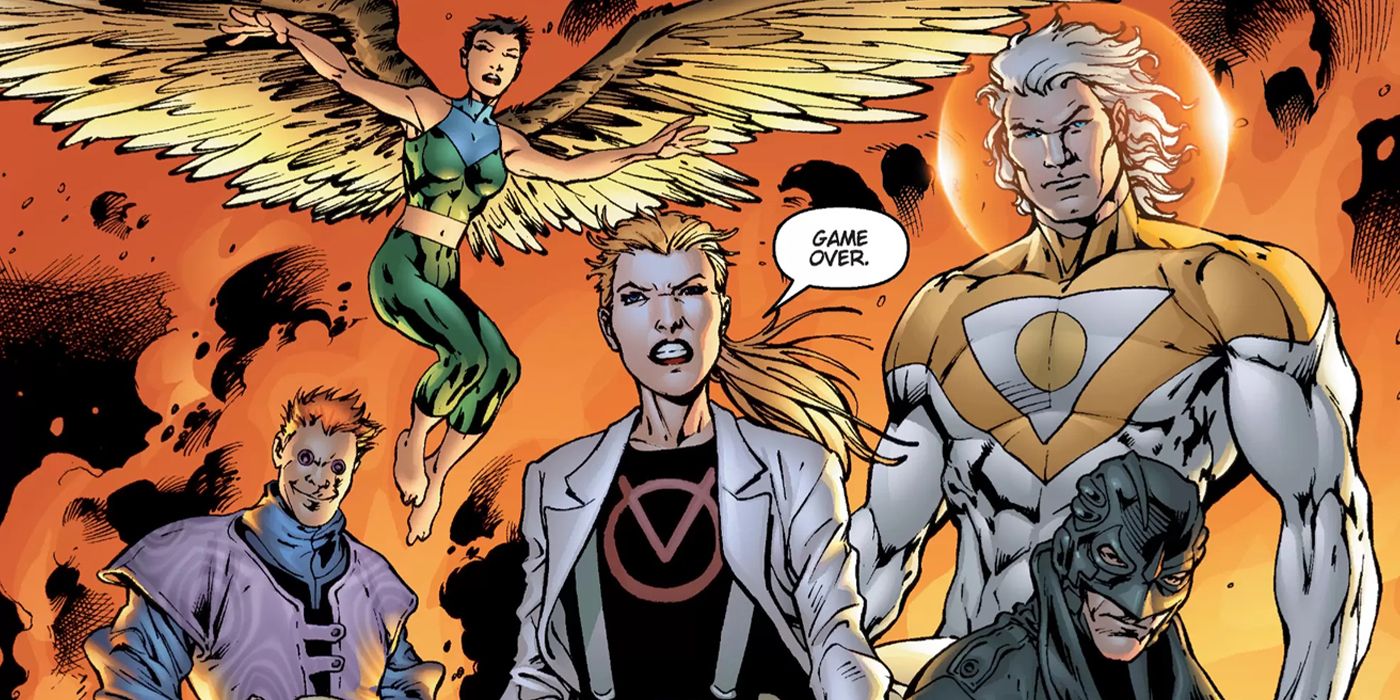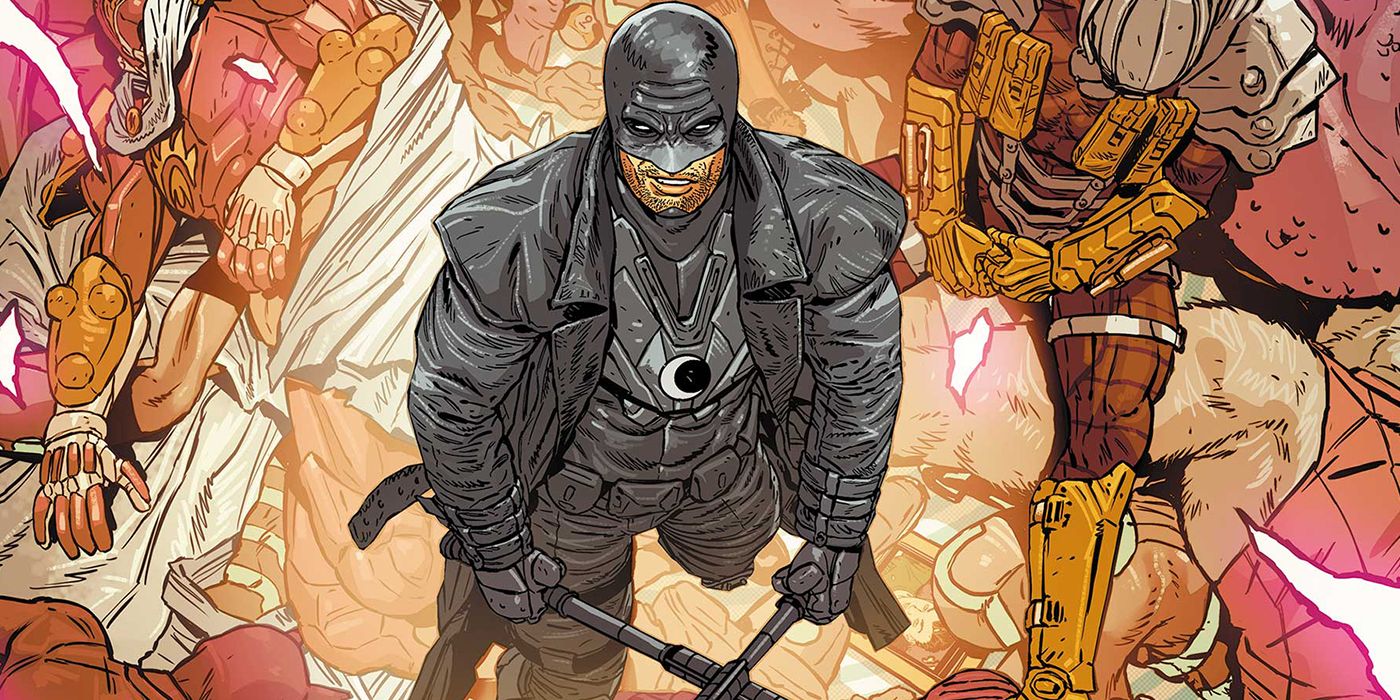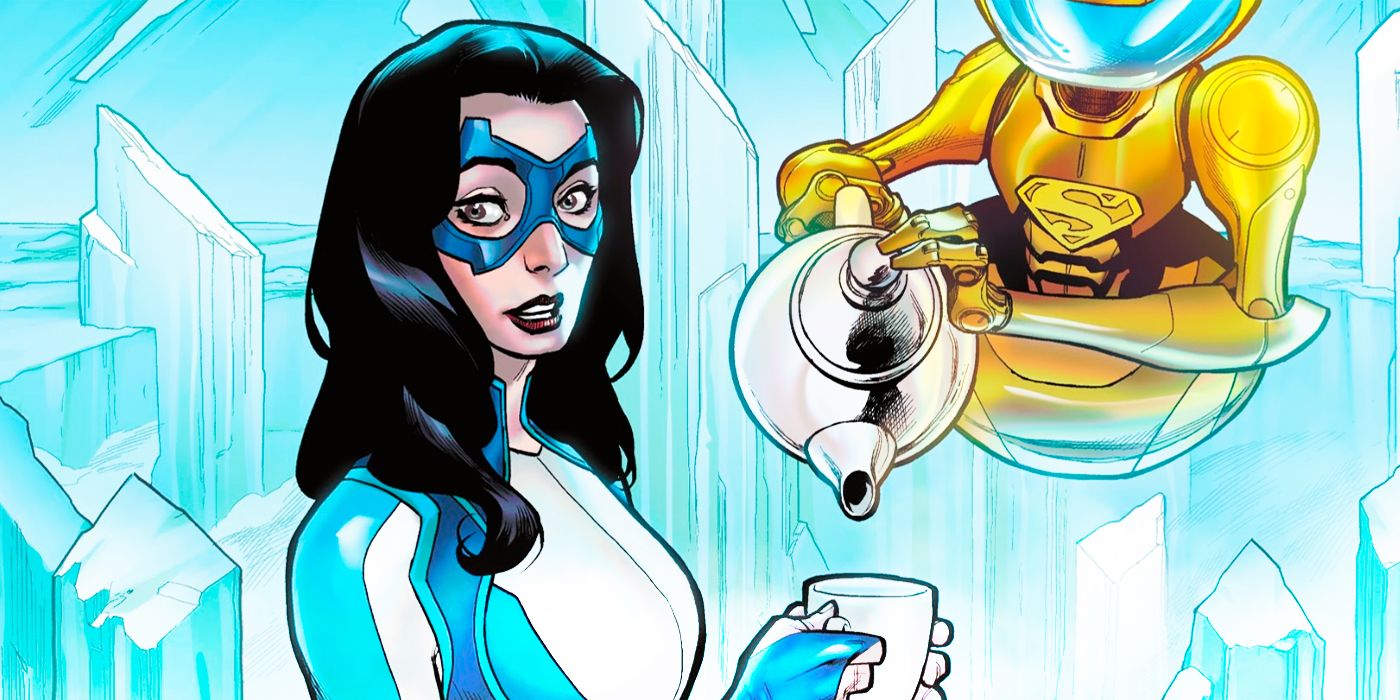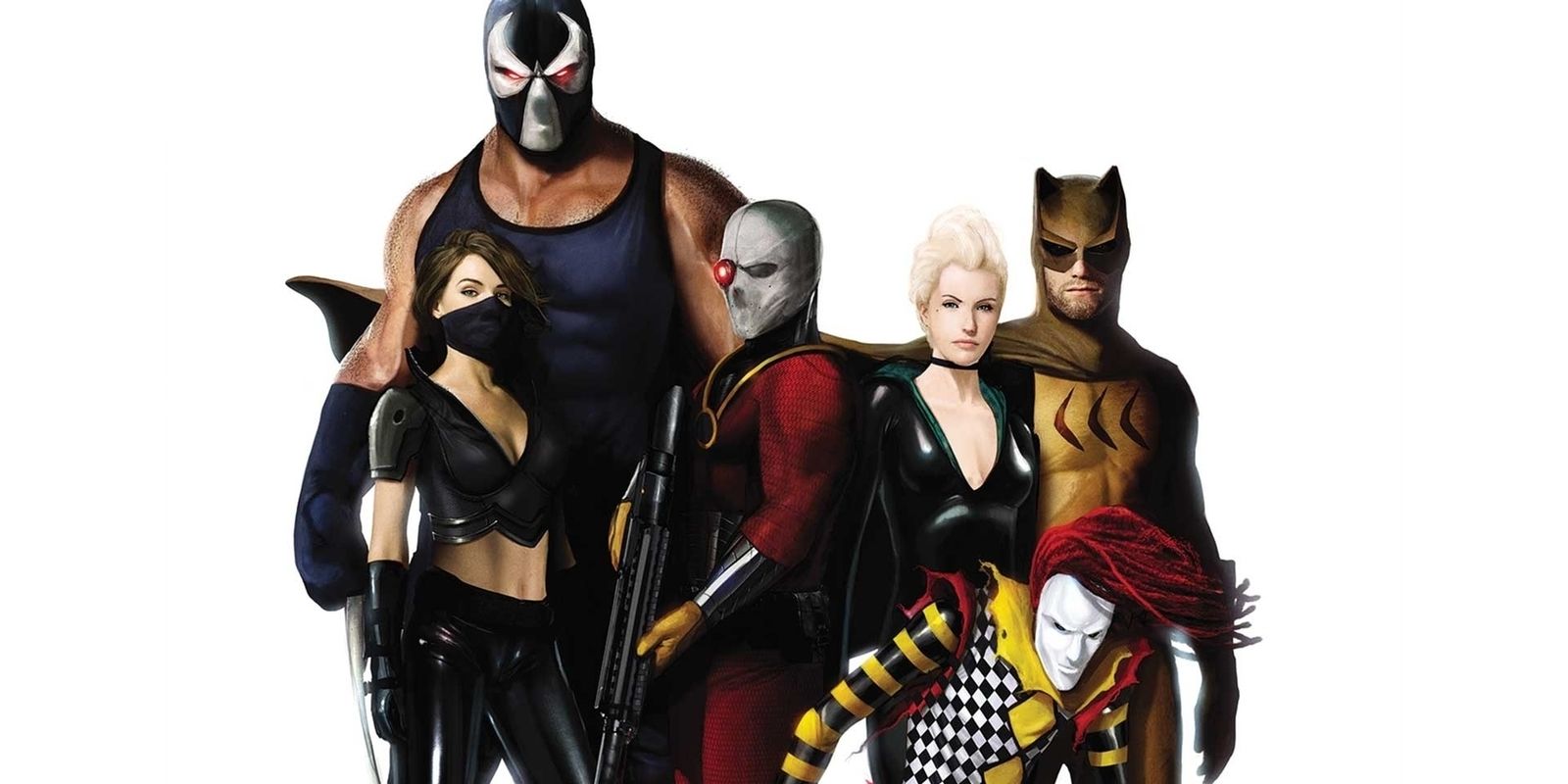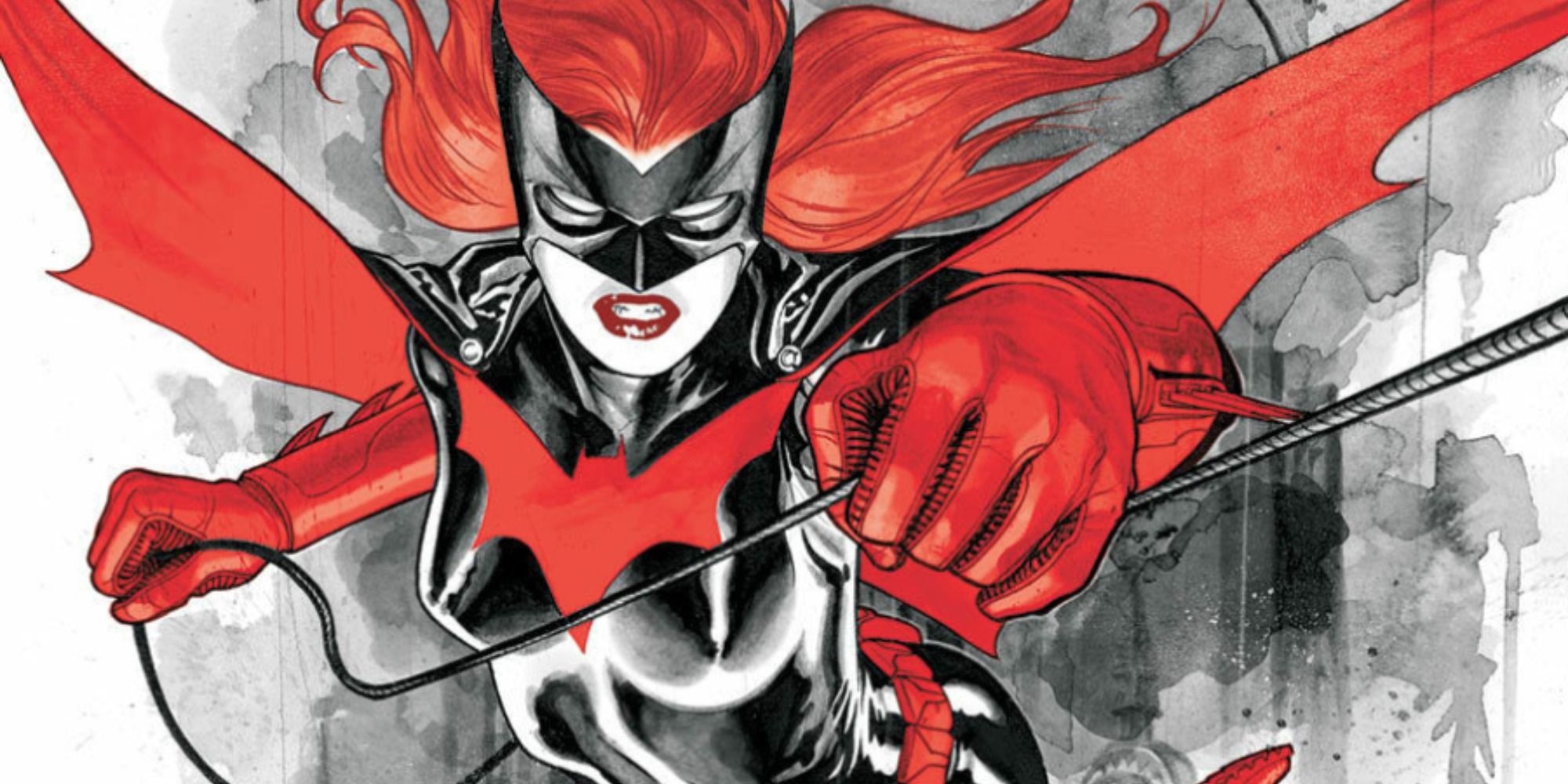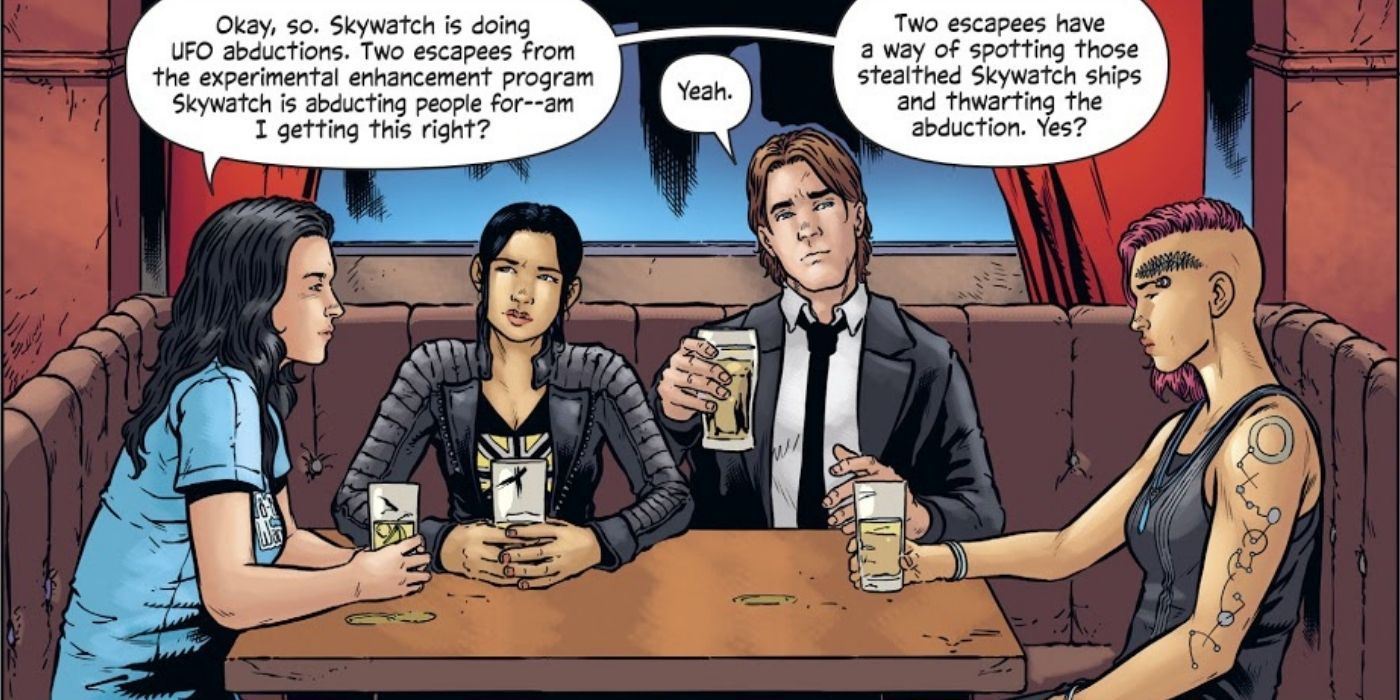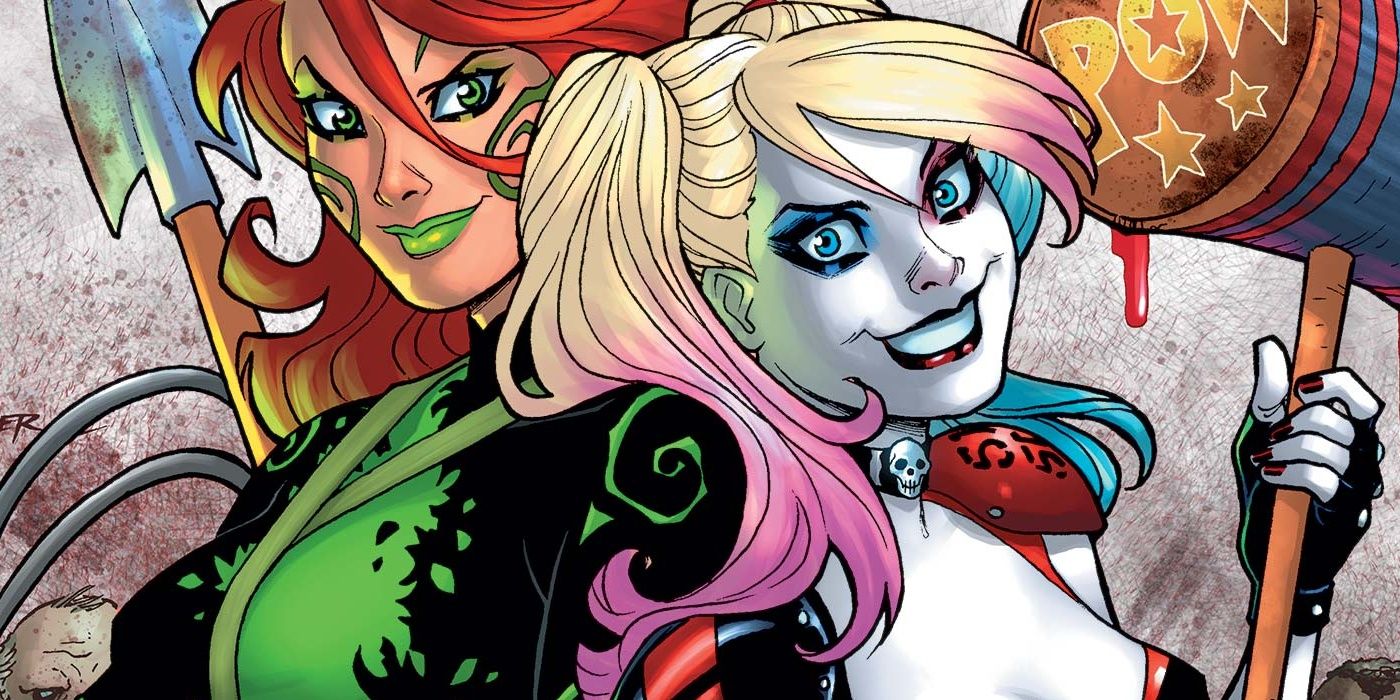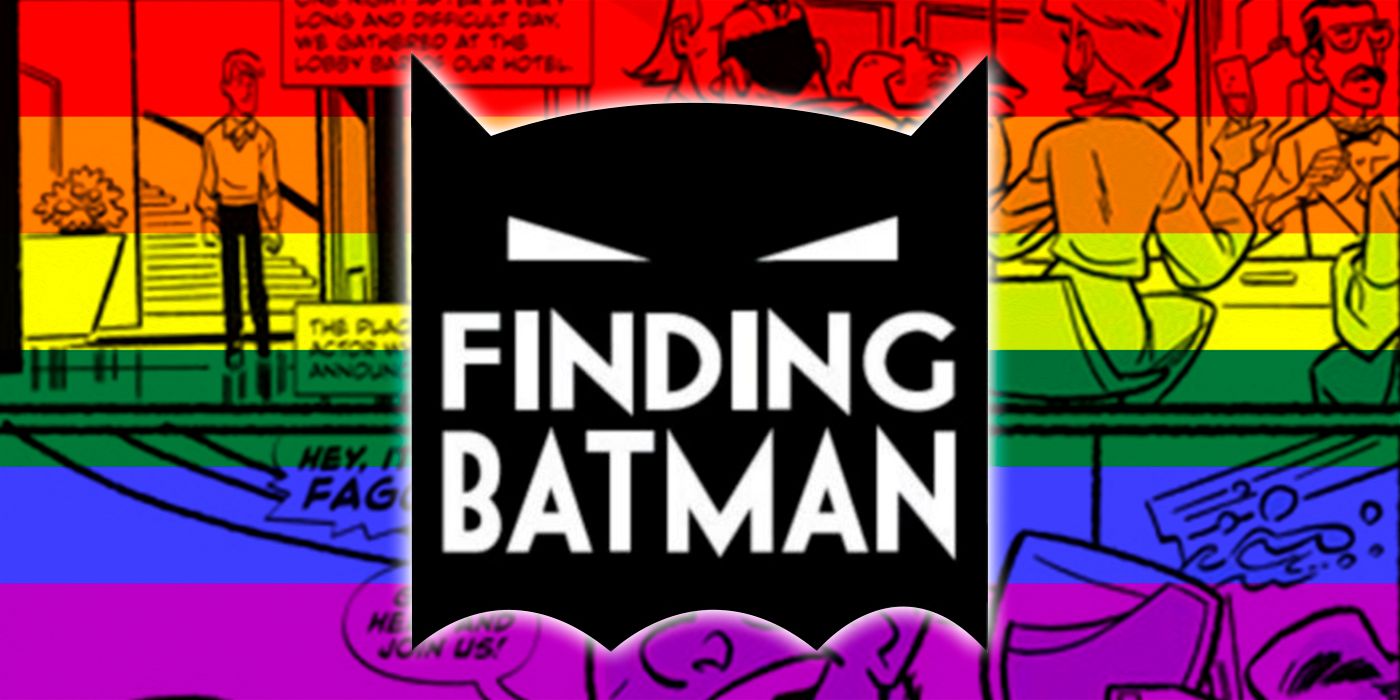DC Comics has some of the most powerful — and most iconic — characters in the entire superhero genre. Among these icons it boasts quite a number of LGBTQ+ characters whose amazing powers and exploits are truly epic to behold. Of course, fans love that they can relate to them.
Representation matters because different types of heroes bring their own experiences to the work they do. These heroes have each gone through their own journeys, and these comics show the full rainbow of experiences that color their perspectives and what they bring to the DC Universe.
Updated on November 26, 2022 by Mayra García: After the unfortunate passing of Kevin Conroy, who will forever be the voice of Batman for many, DC has chosen to honor him by putting "Finding Batman" available for free on their website. This story, which first appeared in the 2022 DC Pride issue, joins many other DC comics that include great LGBTQIA+ representation.
12 Gotham Central Took Renee Montoya Out Of The Closet
By writers Greg Rucka and Ed Brubaker, penciler and inker Michael Lark, colorists Noelle Giddins and Digital Chameleon, and letterer Willie Schubert
Queer representation was something fans really had to fight for. One of the early victories of a mainstream DC comic having an open depiction of a lesbian character was Detective Renee Montoya’s coming out in the series Gotham Central.
Renee was harassed by her coworkers and even stalked by the villain Two-Face, who had developed a crush on her while she was still in the closet. However, she became liberated through after coming out and quickly reminded everyone just why she had earned a reputation as one of the GCPD's best detectives.
11 Crush & Lobo Has A Lesbian Heroine
By writer Mariko Tamaki, penciler and inker Amancay Nahuelpan, colorist Tamra Bonvillain, and letterer Ariana Maher
Crush and Lobo deals with the complicated relationship between Xiomara Rojas, also known as Crush, and her father, the space bounty hunter known as Lobo. When the villain tricks Xiomara into taking his place in jail, Crush needs to become a bounty hunter herself to prove her innocence.
Crush has been a lesbian since she debuted in the comics. In Crush and Lobo, Mariko Tamaki and Amancay Nahuelpan explore Xiomara’s personality and even delve a bit into her love life. The comic doesn’t just talk about Xiomara’s sexual orientation, but it certainly makes sure to represent her as a lesbian in a proper way. This comic was nominated for the GLAAD Award for Outstanding Comic.
10 Wonder Woman: Rebirth Celebrated The Amazons’ Sapphic Love
By writer Greg Rucka, pencilers Matthew Clark and Liam Sharp, inker Sean Parson, colorists Jeremy Colwell and Laura Martin, and letterer Jodi Wynne
Wonder Woman was created to champion such ideals as female empowerment and the pursuit of truth, her early stories frequently featured LGBTQIA+ subtext. In 2016, writer Greg Rucka partnered with artists Nicola Scott and Liam Sharp to reboot the character in Wonder Woman: Rebirth, a series that showcased everything great about the Amazon princess.
The story Wonder Woman: Year One highlighted her time on Themyscira, including her many relationships with other Amazon women. The comic also showed that Diana was polyamorous and one of the major plot threads of the series involved a romantic relationship between Etta Candy and Dr. Barbara Ann Minerva.
9 The Authority Changed Superhero Comics Forever
By writer Warren Elis, penciler Bryan Hitch, inker Paul Neary, colorist Laura Martin, and letterer Bill O'Neil
The Authority was originally a WildStorm property, but DC acquired the rights to it. After several key members of the UN’s primary superhero team were killed, the group disbanded. However, a number of the surviving members formed a new team in secret, the Authority, under the leadership of Jenny Sparks.
Two members, Midnighter and Apollo, were an openly gay couple. Jenny and another character, Swift, also were both revealed to be bisexual and in relationships with other women. The Authority was a bold visionary series in many ways. It was one of the first series that included queer couples, especially as main leads.
8 Midnighter Is A Leather-Clad Hero Whose Out And Proud
By writer Steve Orlando, penciler and inker ACO, colorist Romulo Fajardo Jr., and letterer Jared K. Fletcher
Steve Orlando and ACO’s Midnighter series was part of The New 52 and featured one of the heroes of the original Authority team. After breaking up with his long-time boyfriend Apollo, Midnighter goes on his own path, recrafting his own identity as a hero, now far from The Authority's shadow.
The two volumes that collect this 12-issue series are entitled “Out” and “Hard.” These stories focus on Midnighter's new life, which obviously includes many panels about his sexual orientation. In fact, the very first issue features Midnighter on a date discussing his Grindr profile. Throughout the series, Midnighter defends his own sexuality, making a point to show how proud he is of it.
7 Nia Nal Went From The Arrowverse To The Comics
By writer Nicole Maines, penciler and inker Rachel Stott, colorist Enrica Eren Angiolini, and letterer Steve Wands
After her debut as an original character in the Arrowverse series Supergirl, Nia Nal became a DC queer icon. As one of the first trans superheroes ever, she establishes herself as a staple in representation. DC Pride #1, published in 2021, includes a one-shot called "Daynight," written by Nal's actor Nicole Maines.
In the short story, Maines pits Nia against the League of Shadows while she’s on her way to date with Brainy. This wholesome story is all about the freedom that all LGBTQ+ people want to have in their lives. Since it's written by Maines, who is trans herself, it’s a realistic and sensible approach to the topic.
6 Secret Six Was A Team Of Queer Anti-Heroes
By writer Gail Simone, penciler Nicola Scott, inker Doug Hazlewood, colorist Jason Wright, and letterer Steve Wands
The DC Universe is filled with multiple pantheons of gods, and fans everywhere should thank these deities for the existence of Gail Simone. Simone helped revolutionize the comics industry in many ways, not least of all championing LGBTQIA+ representation in all of her books.
A great example of this is in the critically-acclaimed series Secret Six, which she began writing with artists Brad Walker and Nicola Scott. The team (which Dale Eaglesham also helped create) was comprised of morally grey villains, though they were less villainous than the people they fought against. In addition to having several gay and bisexual characters, the Secret Six was among the first mainstream comics to have a non-binary character (though a gimmicky one). Its premise also served as a metaphor for the outlaw status many LGBTQ+ people were forced into and how they made their lives and communities on the fringes.
5 The Movement Empowered Marginalized Voices Of The 99%
By writer Gail Simone, penciler and inker Freddie E. Williams II, colorist Chris Sotomayor, and letterer Carlos M. Mangual
The Movement is an often-overlooked masterpiece with a great premise: a team of heroes that represent the 99%. Written by Gail Simone and drawn by Freddie Williams II, this brilliant book showed how coalition-building, civil disobedience, and social media could be used to fight against real-world evils like police brutality and corruption. Still, the book somehow maintained humor and an upbeat tone.
The leader of the team, Virtue, began a same-sex relationship with the Apache activist Rainmaker. Additionally, the series includes Tremor, who identifies as an asexual woman, and Burden, a young man coming to terms with his sexual orientation. Out of six characters, four belong to the LGBT community in one way or another. This isn't explored as a source of cheap drama. Instead, Simone made sure to treat the fans to proper queer representation in this series.
4 Batwoman Is A Lesbian Vigilante Who Takes Down Monsters
By writer Greg Rucka, penciler and inker J.H. Williams III, colorist Dave Stweart, and letterer Todd Klein
One of the most visible LGBTQ+ characters is Kate Kane, also known as Batwoman. She first debuted in the maxiseries 52 before going on to star in numerous series of her own. Her backstory was explored in the story Batwoman: Elegy, by Greg Rucka and J.H. Williams III, a comic that revealed how Kate became a superhero after West Point kicked her out for being gay.
Kate Kane has been canonically a lesbian since she debuted. This goes for all her iterations, including live-action and other universes, such as the DC Bombshells. Her journey into becoming Batwoman can easily be paralleled by her coming out. Besides, her sexuality never shadows the rest of her story, but it's still one of her most important aspects.
3 The Wild Storm Features A Superpowered Polycule
By writer Warren Ellis, penciler and inker Jon Davis-Hunt, colorist Steve Buccellato, and letterer Simon Bowland
The Wild Storm was DC’s attempt to bring back the original WildStorm Universe. It was met with mixed results, as it tried to cram a lot of different ideas and groups into a 24-issue story. But it did a pretty incredible job considering how many moving parts it juggled.
The book reintroduced the classic WildStorm power couple, Midnighter and Apollo, who are two of the most diverse characters in comics. It also brought back several other characters such as Jenny Sparks, Jack Harkness, Shen Li-Men, and Angie Spica, all of whom formed a non-monogamous relationship. This is one of the few romances that challenge the conventionality of monogamous love.
2 Harley Quinn Has Become An Icon For The Community
By writers Jimmy Palmiotti and Amanda Conner, penciler and inker Stéphane Roux, colorist Paul Mounts, and letterer John J. Hill
Originally just the Joker’s girlfriend and henchwoman, Harley Quinn has become one of DC’s best-selling and most beloved heroes in recent years, especially after Jimmy Palmiotti and Amanda Conner revamped her story for the New 52. This series sees Harley as she leaves her abusive relationship with the Joker and becomes Poison Ivy's girlfriend, among many other adventures.
Harley Quinn is a hilarious read, but it also offers a beautiful sapphic relationship from the beginning. Harlivy's romance blossoms at the same time that they both, slowly and steadily, change moral alignments. This series definitely changed the way fans see Harley.
1 Finding Batman Speaks About The Gay Experience In Previous Decades
By writer Kevin Conroy, penciler, inker, and colorist J. Bone, and letterer Aditya Bidikar
The last story in 2022 DC Pride #1, "Finding Batman" is an intimate window into Kevin Conroy's experience as a gay actor in the '70s and '80s. With this comic, created with J. Bone and Aditya Bidikar, Conroy explains how his experiences with homophobia helped him voice Batman. Additionally, the actor parallels his internal conflict with Bruce Wayne's, once and for all confirming he was perfect for the role.
After Kevin Conroy's passing, fans are remembering how much he added to the Cape Crusader's myth. "Finding Batman" is a beautiful example of how Conroy and Batman are tied forever. It aims to be real, even if it's a tough story to digest, especially for members of the LGBTQ+ community.

